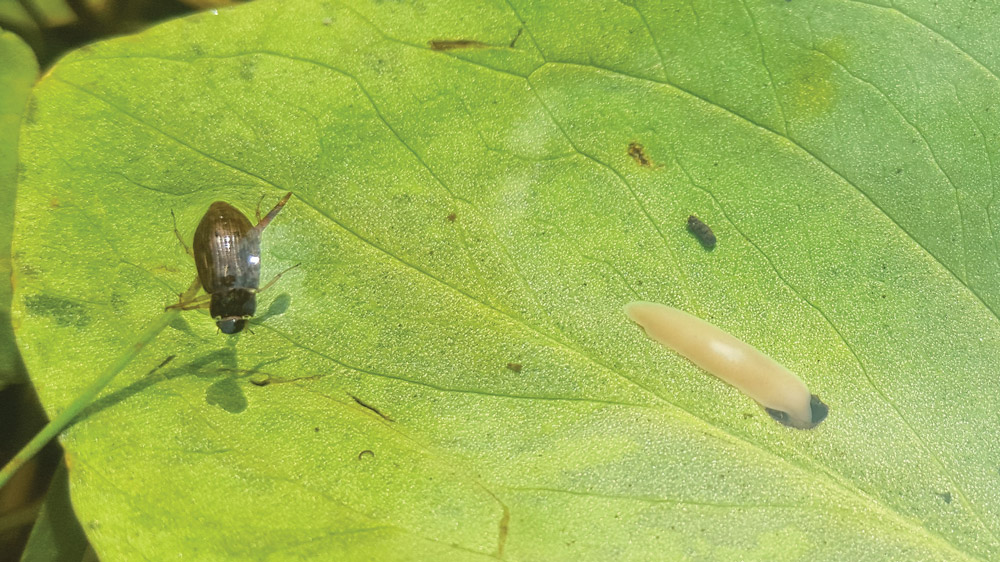
Nature on our Doorsteps: Fascinating Flatworms
Flatworms are a fascinating group of primitive creatures. They have been on the planet for around half a billion years, and they were some of the earliest creatures to evolve.
Unlike earthworms which are tubular in shape, a Flatworm’s body is flattened along its body length.
They are small, usually less than 2cm long, and have very simple nervous and digestive systems. Some species are animal parasites but others are free-living, and they can be found in watery environments or in the soil.
While some Flatworm species have two very simple eyespots on their triangular-shaped heads, these eyes only detect light and shade.
Flatworms are carnivores. Those that live in water feed on small creatures like water fleas, shrimps, and mud worms.
On the land, the larger Flatworms wrap themselves around earthworms and dissolve them by covering them in a digestive slime.

This water Flatworm disappeared through a hole in a leaf when it was disturbed while feeding on a dead beetle.
Many Flatworms are hermaphrodite, and so have both male and female reproductive organs.
These species reproduce by laying eggs.
The thing that makes Flatworms so fascinating, however, is that they can also reproduce by splitting themselves into two halves.
Each of the two halves can regrow the lost tissue, forming two new separate individuals.
This amazing ability is possible due to the presence of stem cells scattered all around the Flatworm’s body.
Even a small piece of tissue that has these stem cells can grow into a new Flatworm.

